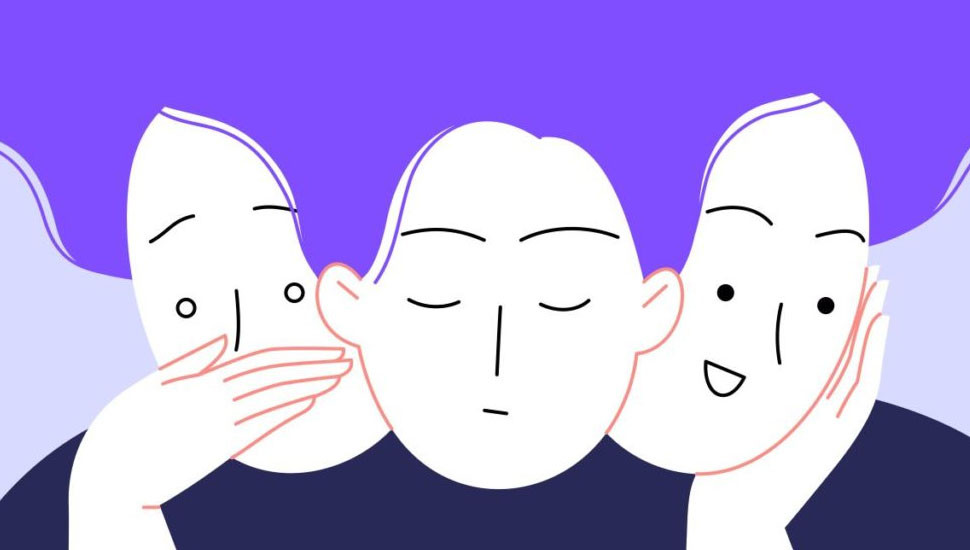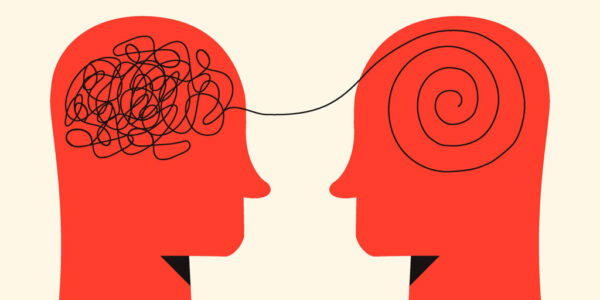LISTEN TO THIS ARTICLE:
There are four types of Borderline Personality Disorder: self-destructive, impulsive, petulant, and discouraged. These subtypes represent different patterns of behavior and characteristics within the broader diagnosis of BPD. A person’s symptoms can fit into one or more than one of these types of BPD. Some people don’t fit neatly into any of them, either.
When we talk about mental health disorders, there’s usually a silent assumption that any two people who have a disorder feel similar symptoms. Depression is depression. Anxiety is anxiety. But BPD is different. This disorder is incredibly diverse and is often confused with other disorders like Bipolar Disorder. This has lead some researchers to identify four types of Borderline Personality Disorder.
The four types of Borderline Personality Disorder
1. Self destructive
What are the symptoms of Self Destructive BPD?
- Risky behavior
- Bipolar–like traits
- Self-harm
People with this type, like the other four types of Borderline Personality Disorder, have trouble forming stable connections with other people. They will go overboard to impress and please others, but then they feel resentful as well. These people turn their frustrations inward, taking it our on themselves. They may have vague physical symptoms, and depression is common. When they feel underappreciated, they suspect that people close to them will abandon them. This is often when they self-harm or attempt suicide.

2. Impulsive
What are the symptoms of Impulsive BPD?
- Rash
- Unstable
- Reckless
People with Impulsive BPD are desperate for attention and external approval. To achieve this, they construct wild, unpredictable personas. Their emotions are often positive, but inauthentic, bouncing from one type of excitement to the next. These people struggle with impulse control, leading to risky behaviors such as substance abuse, reckless driving, and unprotected sex. They feel most secure when this behavior draws notice from other people. Their impulsive actions are often driven by a need to escape emotional distress. Their identity is rooted in this attention, and when they don’t get it, they become depressed and withdrawn.
3. Petulant
What are the symptoms of Petulant BPD?
- Irritable
- Angry
- Impatient
Of all four types of Borderline Personality Disorder, people with the petulant type of BPD have the widest range of emotions. They tend to be irritable, moody, and quick to take offense. They may display passive-aggressive behavior and have difficulties managing their anger. These people suffer from a wide range of negative emotions, rarely feeling content both alone and in relationships. As often as they feel depressed, they also attack others. They lash out at those around them, constantly demanding, never satisfied, and always resentful of those helping them. After these outbursts, they often feel remorse. However, this remorse is often tainted with behaviors that continue to demand a lot of those around them.
4. Discouraged
What are the symptoms of Discouraged BPD?
- Dependent
- Helpless
- Passive
These people develop strong, submissive bonds to one or two other people. No matter the true health of that relationship, the individual is always afraid of it ending. They have a chronic, intense fear of rejection. These people worry constantly about being abandoned and cling desperately to that connection. They can become extremely dependent, to the point where they cannot stand any separation. When they find themselves alone, they feel defenseless and depressed. Even the simple tasks of daily life become very taxing. Individuals with this subtype may struggle with chronic feelings of emptiness and have difficulty finding meaning in life.These people have strong depressive traits and are prone to acts of self-harm or suicide attempts.
How Is Borderline Personality Disorder Treated?
Dialectical Behavior Therapy is the key to treating all four types of Borderline Personality Disorder. The vast differences in the four types of Borderline PD have made treating it difficult, but understanding the types can change that. Although these are not official categories, simply introducing this more flexible view is a step forward. It can give therapists new avenues to explore when a someone they are seeing doesn’t fit the traditional mold of Borderline.
People with this disorder are intriguing and compelling, but relationships with them can sometimes feel exhausting at times. (If you have Borderline PD, you may feel quite tired of it yourself at times.) As a result, forming lasting bonds between clients and therapists is really hard. People often impulsively quit therapy when it becomes challenging and fiercely resist any boundaries the therapist tries to set. Even worse, they impulsively quit therapy, only to return when they are in crisis.
Every step of living with Borderline PD is tough. For people with Borderline and their families, friends, and treatment providers, learning more about the subtleties of this personality disorder can make of those steps a bit easier.


 Learn
Learn Get News
Get News Find Help
Find Help
 Share
Share
 Share
Share
 Share
Share
 Share
Share

